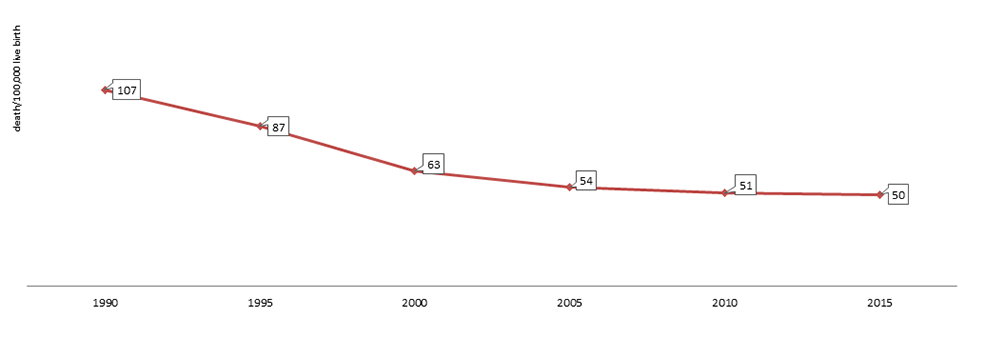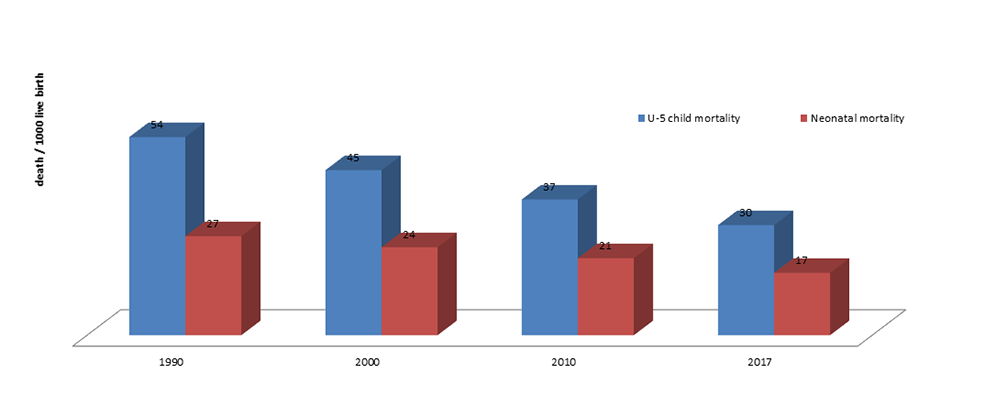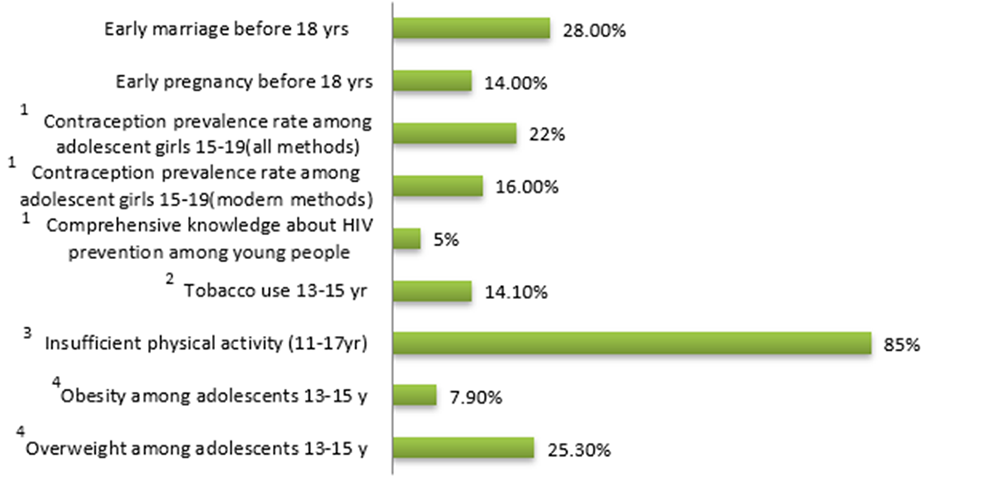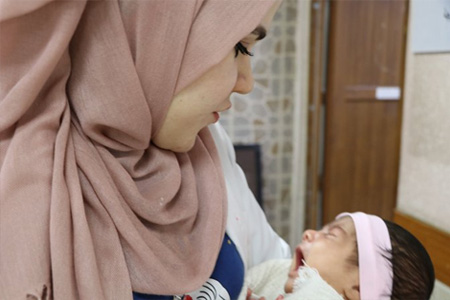Although widespread public health and developmental progress has been made in recent decades, women, children and adolescents still face numerous health challenges and risks.
In the past 25 years, the population of Iraq has increased by more than 50% to about 40 million in 2018 according to most recent civil society organization data, with about 30% of the population living in rural settings1.
The population is young, with 13.9% children less than 5-years of age and 22.3% adolescents aged 10–19 years old. Women of reproductive age (15-49) represent 24.7% of the total population1.
Iraq is among 10 countries in the Eastern Mediterranean Region in terms of total fertility rate 3.6 and adolescent fertility rate 70/1000 15-19 girls.2
Decades of conflict, sanctions and political instability have slowed Iraq's progress in reducing child and maternal mortality but improving maternal and child health is a priority in the Ministry of Health’s strategic plans. Reproductive health services are improving after decline following the 2003 conflict but access to reliable data remain somewhat limited.
The UN Inter-Agency Group Estimate for Maternal Mortality Ratio shows a decline in the maternal mortality ratio (MMR) from 107 to 50 per 100 000 live births between 1990 and 2015, while according to the Iraq Poverty Map and Maternal Mortality Survey, the maternal mortality ratio was 35.7 per 100 000 live births in 2013.

Fig. 1. Trend of maternal mortality ratio, 1990–2015
Direct causes of maternal mortality according to Ministry of Health statistics for 2017 were:
haemorrhage (32.4%)
pre-eclampsia/eclampsia (14.5%)
thromboembolism (14.4%)
rupture uterus (4.7%)
sepsis (4.4%).
Early age of marriage and adolescent pregnancy negatively impact on the socioeconomic status of those women and their families; putting an under-served population in a more vulnerable context.

Fig. 2. Trend in under-5 mortality and neonatal mortality, 1990–2017
Policies and strategies
The Ministry of Health has adopted several policies and strategies in favour of maternal and child health with a vision that the health of women and children is the key to progress towards all development goals; investing more in their health will help building peaceful and productive societies and reduces poverty.
Following are some of the major policies and strategies introduced and currently being implemented:
National Health Policy (2014–2023)
Reproductive, Maternal, Newborn, Child and Adolescent Health Strategy (2016–2020)
Iraq Every Newborn Action Plan (2016–2020)
Iraq Nursing and Midwifery Strategy and Action Plan (2017–2027)
National Nutrition Strategy (2012–2021)
National Code of Marketing Breast Milk Substitutes, 2016.
National Strategic Plan of HIV/AIDS (2016–2020)
Maternal Death Surveillance and Response, 2012.
Adolescent health services for young people (10-24 years) are still neglected in the public sector. The lack of sustainable programme within the Ministry of Health and the overlap of the services among different programmes such as maternal and child health, noncommunicable diseases and school health represent one of the main obstacles. Trials to integrate the programme within school health since it is the section which cover most of the adolescent had been tried at 2013 which needed further restructuring and integration work within the Ministry of Health.

Fig. 3. Adolescent health profile
Priority areas
Maternal and perinatal death surveillance and response.
Child health and development.
Adolescent/youth health and development.
Adoption/update and implementation of WHO guidelines regarding reproductive, maternal, newborn child and adolescent health.
1 WHO 2015. Trends in maternal mortality: 1990 to 2015. Estimates by WHO, UNICEF, UNFPA, the World Bank and the United Nations Population Division. Geneva. 2015.
2 Civil society organizations, UNFPA Iraq, 2013. Iraq Poverty Map and Maternal Mortality Survey, 2013.
3 Ministry of Health 2017. Annual Statistics Report 2017.
4 WHO Regional Office for the Eastern Mediterranean 2018. Framework for health information system and core indicators for monitoring health situation and health system performance, 2018.



